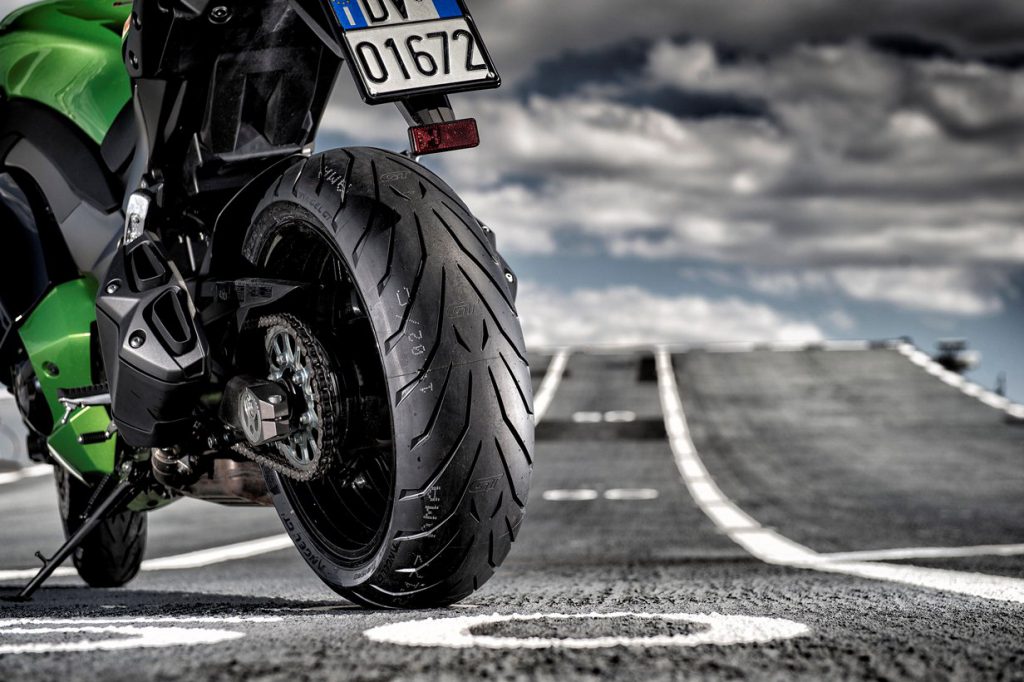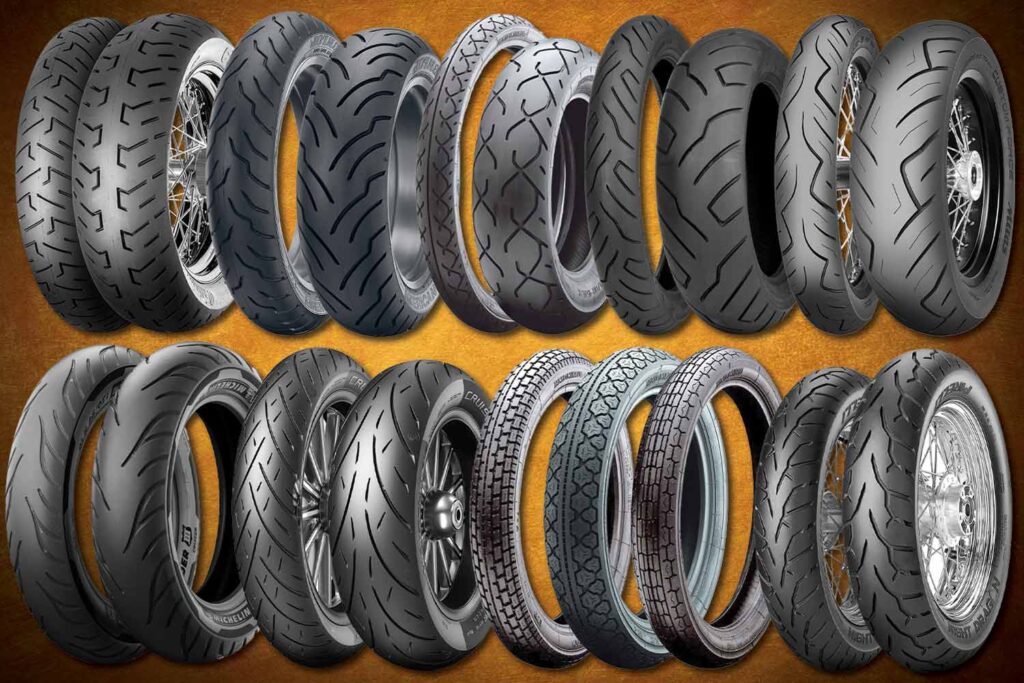All Concerning the Essential Bike Tire Guide for Optimal Bike Upkeep and Performance
The Essential Bike Tire Guide offers as an essential resource for cyclists seeking to enhance their bike's performance and safety. motorcycle tyre guide. It offers insights right into different tyre types and specifications that affect dealing with and longevity. In addition, understanding appropriate maintenance techniques can considerably expand tyre life. Several cyclists ignore crucial aspects that impact their riding experience. Discovering these elements can bring about informed choices that ultimately improve both safety and security and enjoyment on the roadway
Understanding Motorcycle Tyre Kind
When choosing bike tires, comprehending the different kinds readily available is essential for peak efficiency and safety. Motorcyclists run into different tyre groups, each designed for details riding problems and designs. For instance, sport tyres highlight grasp and responsiveness, making them appropriate for high-performance bikes and track usage. Touring tyres, on the other hand, emphasis on longevity and comfort, suitable for long-distance experiences. Off-road tires feature aggressive tread patterns, giving grip on irregular surfaces, while dual-sport tyres supply convenience for riders that change in between off-road and on-road conditions.Additionally, cruiser tyres are created for security and a smooth trip, satisfying the special needs of cruisers and touring bikes. Comprehending these categories enables cyclists to pick tires that line up with their riding practices and environmental conditions, inevitably enhancing both safety and performance. Each type plays an essential role in making sure a superior riding experience customized to the individual motorcyclist's demands.
Secret Tire Specifications Explained
Selecting the proper motorcycle tyres entails even more than just recognizing the different types; it additionally calls for knowledge with crucial specifications that influence efficiency and safety. Key requirements include tire size, which is commonly expressed as a series of numbers suggesting width, element proportion, and rim size. This code is essential for making certain compatibility with the motorcycle.Another vital specification is the lots index, showing the optimum weight a tire can sustain. The speed rating denotes the optimal rate a tire can securely take care of, essential for efficiency enthusiasts.Additionally, step pattern and rubber compound affect grip, stability, and use characteristics. Tires with a softer substance often tend to offer much better hold but wear much faster, while tougher substances last longer yet might give up traction. Comprehending these specifications permits cyclists to make educated choices, boosting both their safety and security and riding experience.
Just how to Pick the Right Tyres for Your Bike
How can a biker assurance they select the ideal tires for their bike? Picking the ideal tires entails comprehending the certain requirements based on riding design, terrain, and climate problems. Cyclists should initially consult the motorbike's manual to determine suggested tyre sizes and specifications.Next, they have to examine the sort of riding they prepare to do-- whether it's travelling, touring, or off-road. Each classification has unique tyre designs customized for peak performance.Additionally, cyclists must evaluate step patterns; deeper footsteps supply far better grip in damp conditions, while shallower footsteps enhance security on dry surfaces.Lastly, it is vital to check out the tire's construction and product, as these variables influence resilience and handling (motorcycle tyre guide). By assessing these aspects carefully, a cyclist can confidently choose tyres that enhance safety and security, performance, and general riding experience
The Value of Tyre Stress and Upkeep
Tyre pressure is a substantial aspect of bike upkeep that straight impacts security and performance. Keeping the appropriate tyre pressure assurances ideal call with the road, boosting hold and security during experiences. Under-inflated tires can lead to enhanced rolling resistance, causing poor gas efficiency and unnecessary wear on the tires. Alternatively, over-inflated tyres might lower and cause a rough adventure grip, specifically in wet conditions.Regularly monitoring tyre pressure, ideally before each ride, is crucial to keeping the motorcycle's total performance. Bikers need to refer to the manufacturer's specs for the advised pressure degrees. In addition, keeping track of tyre problem and readjusting stress according to load and riding problems is vital for safety and security. Proper tyre maintenance contributes to extended tyre life expectancy, better handling, and improved stopping efficiency. Ultimately, consistent attention to tyre stress and upkeep is vital for assuring a safe and enjoyable riding experience.

Recognizing Indicators of Tyre Use and Damage
Recognizing indicators of tyre wear and damages is crucial for preserving bike security and efficiency. Key signs include reviewing tread deepness and performing a thorough visual examination for any kind of noticeable damage. Resolving these aspects immediately can protect against more complications when driving.
Walk Deepness Evaluation
As motorcyclists take to the roads, the relevance of examining step depth can not be overemphasized, considering that worn or harmed tyres can significantly affect security and efficiency. Walk depth directly affects traction, braking distance, and cornering security. To assess step deepness, riders ought to utilize a step deepness gauge, gauging the grooves at various points across the tyre. A deepness of 2mm or less shows considerable wear and requires prompt substitute. Furthermore, riders can employ the "penny examination" by putting a coin into the walk; if the top of Lincoln's head is noticeable, the tyre is as well used. Normal checks assure peak grasp on varied roadway conditions, advertising a much safer riding experience while enhancing the overall handling of the motorbike.
Aesthetic Damage Inspection
Checking bike tyres for aesthetic damage is necessary for keeping safety and security when traveling. Bikers need to regularly examine tires for indicators of wear such as splits, protrudes, or slits. Uneven wear patterns might indicate alignment problems or improper inflation, bring about jeopardized performance. Additionally, looking for international things installed in the tread can prevent potential blowouts. Motorcyclists should pay attention to the sidewalls, as any type of abrasions or cuts can compromise the tire's structure. Ensuring that the walk is without excessive wear is important for excellent hold. Routine visual assessments not only improve safety and security yet likewise extend the life of the tires, ensuring a smoother and much more dependable riding experience. Prompt discovery of damages can prevent expensive fixings and mishaps.
Seasonal Tire Considerations for Various Riding Conditions
When taking into consideration motorcycle tires, seasonal problems play a vital duty in performance. In wet climate, tyres designed for boosted hold and water displacement end up being crucial for safety and security. Additionally, winter season riding requires particular tire characteristics to guarantee peak traction on cool, possibly unwelcoming surfaces.

Damp Climate Performance
Damp climate condition existing unique obstacles for motorcyclists, making the option of tyres important for safety and security and efficiency. Tyres created for damp weather generally feature much deeper treads and specialized rubber compounds that enhance grip on slippery surfaces. These tires are crafted to carry water away, look at these guys reducing the risk of aquaplaning and improving security during rainfall. Bikers need to think about tyres with a balanced layout, providing both grip and site here longevity in damp problems. In addition, maintaining correct tyre stress is essential, as under-inflated tires can endanger efficiency. Normal examinations for wear and damage are required to assure peak function when confronted with rain-soaked roads. Selecting proper wet-weather tires ultimately adds to a much safer and extra pleasurable riding experience.
Winter Months Tyre Requirements
Riding in winter conditions presents distinctive difficulties that require specific tyre demands to assure safety and security and efficiency. Winter months bike tires are designed with much deeper footsteps and softer rubber compounds, offering improved grip on unsafe and cold surface areas. This is important for preserving traction on ice, snow, and wet roadways. Additionally, winter season tires usually feature an unique tread pattern that helps network water away, minimizing the threat of aquaplaning. Cyclists need to additionally consider the tyre's temperature level strength, as efficiency can reduce in severe cold. It is crucial to on a regular basis inspect tyre stress, as it can go down significantly in lower temperatures. By picking the ideal winter tyres, cyclists can navigate rough problems with higher self-confidence and stability, making certain a more secure riding experience.
Tips for Correct Tire Storage and Durability
Proper tyre storage is crucial for maintaining their long life and performance gradually, as ignoring this element can lead to early degeneration. To assure ideal storage, it is important to keep tyres in an amazing, dry environment away from straight sunlight and sources of warmth, such as radiators or heating systems. Extreme heat can cause rubber substances to damage down, endangering the tyre's integrity.Additionally, tires should be stored upright or stacked flat, depending on their kind. If stacked, it is recommended to turn them regularly to avoid flat spots. Correct rising cost of living is additionally vital; tyres should be blown up to the producer's advised stress to avoid deformation.Lastly, it is helpful to cover tyres with a protective material to protect them from dirt and impurities. Following these ideas will certainly help extend the life of motorbike tyres, guaranteeing they remain reliable and secure for use when the riding period returns to.
Regularly Asked Inquiries
Just how Frequently Should I Change My Motorbike Tyres?

Can I Mix Different Tire Brands on My Motorcycle?
Mixing various tire brands on a motorbike is normally not suggested. Variants in tread patterns, rubber substances, and efficiency features can result in uncertain handling and compromised safety, potentially enhancing the threat of crashes.
What Is the Life-span of a Bike Tire?
The life-span of a bike tire commonly varies from 5,000 to 15,000 miles, affected by factors such as riding tyre, surface, and design upkeep. Normal inspections can help guarantee peak performance and safety throughout their use.
How Do I Deal With Old Bike Tyres?
When disposing of old motorcycle tyres, they need to be taken to assigned recycling. Many regional waste management solutions also use tire disposal programs, making certain ecologically friendly handling and compliance with neighborhood guidelines concerning tire waste.
Exist Any Kind Of Tire Guarantees Available for Bikes?
Lots of bike tyre producers supply warranties that cover flaws in material and craftsmanship. The specifics differ by brand name and model, so it's important for motorcyclists to assess private service warranty terms before acquiring new tyres. Off-road tires include aggressive tread patterns, supplying traction on unequal surface areas, while dual-sport tyres supply adaptability for riders who move in between off-road and on-road conditions.Additionally, cruiser tires are designed for stability and a smooth adventure, catering to the unique demands of cruisers and visiting bikes. Each group has distinctive tire layouts customized for height performance.Additionally, riders ought to assess walk patterns; much deeper treads use better grip in wet problems, while shallower treads improve stability on dry surfaces.Lastly, it is important to check out the tyre's building and product, as these elements affect resilience and handling. Proper tyre maintenance adds to prolonged tire life expectancy, better handling, and improved braking efficiency. Appropriate inflation is also important; tyres should resource be inflated to the producer's suggested pressure to prevent deformation.Lastly, it is beneficial to cover tyres with a protective product to secure them from dust and pollutants. The life expectancy of a bike tyre generally varies from 5,000 to 15,000 miles, influenced by elements such as riding terrain, tire, and design maintenance.